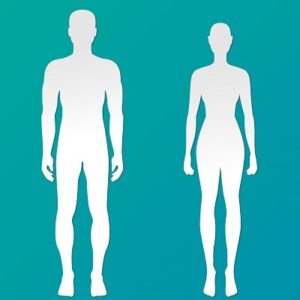 Heart disease is a growing problem in the world as more and more people succumb to the stresses of living in a fast-paced society with poor nutrition, less sleep and even less exercise.
Heart disease is a growing problem in the world as more and more people succumb to the stresses of living in a fast-paced society with poor nutrition, less sleep and even less exercise.
Heart disease is a leading killer and heart attacks are the most visible sign of heart disease. The American Heart Association predicts that 700,000 people would have their first heart attack in 2004 and their prediction was very close to the mark.
Heart disease in men and women has different signs and symptoms. Both can experience atypical symptoms, or those symptoms that aren’t otherwise thought of as typical.
Classic signs of a heart attack will be pain the chest, left arm, epigastric pain that can mimic really bad heart burn, crushing chest pain and even abdominal pain. People may experience being short of breath, pain in the jaw, nausea, chills, sweating or cold, clammy skin.
Not all of these symptoms happen with each heart attack so if you experience one of them that doesn’t disappear within 1 or 2 minutes call an ambulance for evaluation at the hospital. During a heart attack seconds count.
Physicians counsel their patients to never to be embarrassed about being taken to the hospital for evaluation of chest pain or a possible heart attack. The doctors would rather you had an exam and found to be healthy rather than die of a heart attack because you were too embarrassed to go to the hospital.
Atypical heart symptoms can include symptoms such as pain in the upper back, stomach, right arm, or just a general feeling that something is wrong (called general malaise). Both men and women can have these atypical signs and symptoms but they are more common in women than in men.
In a recent study of heart attack sufferers the researchers found that right sided discomfort was 4.7 times more likely to be reported by men and women complained of throat discomfort 12 times more. More men complained of an overall feeling of discomfort while vomiting was reported 3.9 times more likely in women. Researchers also found that men were five times more likely to recognize their symptoms as a heart attack than women. (1)
On average men waited three hours before going to the hospital while women waited four hours. Of course this is not only very dangerous but also will decrease the number of options available to treat the heart attack once the person reaches the hospital.
There are medical treatments that must be started within one or two hours after the person feels symptoms in order for the treatment to work and reduce the need for any subsequent surgery. The CDC reported that in 1999 almost half of the deaths from heart attacks happened before the person reached the emergency room for treatment because people delayed getting help.
In the past there has been a significant gender bias toward women when doctors evaluated people for heart disease and heart attack. In the past many of the research studies were performed on men, which left information about women out of reach of treating physicians.
And often, doctors and patients believe that chest pain in women isn’t from cardiac causes which leads to misinterpretation of their condition.
The differences in how men and women respond to symptoms of heart disease also include the reasons why people delay treatment. Women may tend to avoid or delay medical care because of denial or not being aware that the symptoms they are feeling are symptoms of a heart attack.
Women also tend to have heart attacks later in life than men so there are other medical conditions that can either mask a heart attack or be contributing factors, such as arthritis, osteoporosis and diabetes. Because most of the previous research was done on men some of the diagnostic testing and procedures may not be as accurate on women as they are on men.
Some doctors may choose to avoid using these procedures which delays the diagnosis of a disease process which can result in heart attack or stroke.
For example, the exercise stress test may be less accurate in women giving a false positive result. But women more commonly have a single-vessel disease process and this isn’t picked up in an exercise stress test.
The differences in heart disease between men and women have implications for diagnosis and treatment for women. Education has been changing in the past years for both physicians and patients. This has been improving the treatment of women with heart disease and their outcomes.
(1) Nursing Research Editor: Symptom Clusters in Acute Myocardial Infarction
RESOURCES
Beth Israel Deaconess Medical Hospital: Heart Disease
Centers for Disease Control and Prevention: Prevalence of Coronary Heart disease
Center for Disease Control and Prevention: Women and Heart Disease Fact Sheet






